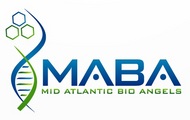 A Q&A with Mid Atlantic Bio Angels (MABA) founder Yaniv Sneor about the group, what they look for in potential investments, and why life science startups need investors that are particularly knowledgeable about the sector. MABA is focused on early-stage investments in biotech companies based in the Mid-Atlantic coastal region of the U.S. Invite-only memberships in MABA are extended to active, accredited Angels who seek to make investments in life science companies, as well as institutional investors and life science company venture arms seeking to invest alongside the Angels. It was founded by Sneor, Stephen Goodman, and Bernard Rudnick, and made its first investment this past June ($500,000 in Cerus Endovascular).
A Q&A with Mid Atlantic Bio Angels (MABA) founder Yaniv Sneor about the group, what they look for in potential investments, and why life science startups need investors that are particularly knowledgeable about the sector. MABA is focused on early-stage investments in biotech companies based in the Mid-Atlantic coastal region of the U.S. Invite-only memberships in MABA are extended to active, accredited Angels who seek to make investments in life science companies, as well as institutional investors and life science company venture arms seeking to invest alongside the Angels. It was founded by Sneor, Stephen Goodman, and Bernard Rudnick, and made its first investment this past June ($500,000 in Cerus Endovascular).
SUB: Please describe MABA and its mission.
Sneor: While the Mid-Atlantic region is home to a formidable number of early-stage life science companies, and an even more formidable number of accomplished current and retired life science executives and investors, more often than not, life science companies seeking investment end up presenting to a group of non life science investors who are unable or not interested to understand or relate to the company’s product or service, nor to the effort required to bring these to market. This mismatch has given rise to the creation of the Mid Atlantic Bio Angels group, an Angel investor group focused exclusively on new and emerging life science companies.
SUB: In what types of life sciences startups—stage, market, etc.—are you looking to invest?
Sneor: We prefer opportunities with clear unmet market need, or clearly-defined competitive advantage over existing products already in that market and a potential or demonstrated addressable market of at least $100 million. For platform technologies, the market for the initial product derived from the platform should be large enough to justify the investment on its own. We recommend market size estimates be built ‘bottom up’ from number of patients and procedures and the anticipated price of your product and service, and not ‘top down’ from published reports on dollar or unit number for sales related to a disease. Your sales projections in relation to this market should translate into a realistically achievable market share.
Proof of concept: The company should have a readily describable or identifiable product and established some ideally publishable data which provides proof-of-concept for the product’s efficacy or utility, ideally sufficient to support at least a provisional patent application. For therapeutics, this may mean that a molecule has been identified and some small animal testing in accepted models is complete. For a device, this may mean an initial model or prototype, some in-vitro testing and ideally some acute in-vivo testing has been completed. For a diagnostic, this may mean that at least retrospective testing has been completed on real samples. For a service or IT product, you need at least a prototype algorithm and/or a vaporware presentation and some information regarding the intended patent protection.
SUB: What are the major positive characteristics that you look for in a potential investment?
Sneor: Strength and quality of management team and advisory support; strength of market need; good science; clear path to regulatory approval and market adoption; if applicable, a clear path to reimbursement; IP and market space that are not crowded.
SUB: What are the red flags that you look for in a potential investment?
Sneor: Non-coachable CEO; lack of understanding of road ahead; high valuation; high dollar requirements; crowded market, IP space; executive team members that are related.
SUB: How and why did you decide to become an Angel investor in this particular market?
Sneor: The reason is that the focus in the life sciences market is basically one of ‘doing well by doing good.’ The hope is not only that you will make money but that while you’re making money, you’re also helping people solve medical problems and get help—or at least better help—where there was no help before. For me, this is a higher value than creating another iteration of a social network, even though those projects can result in businesses with highly desired products and services. For many of our members, it’s also about investing in what you know. A lot of them have been working in life sciences as physicians or pharma execs for their entire careers.
SUB: What kinds of life sciences startups do you see as holding the most promise for investors, long term?
Sneor: Quality begins with team. For Angel investors, devices and diagnostics are more often a better fit, in terms of investment dollars required and risk profile
MABA – www.bioangels.net












